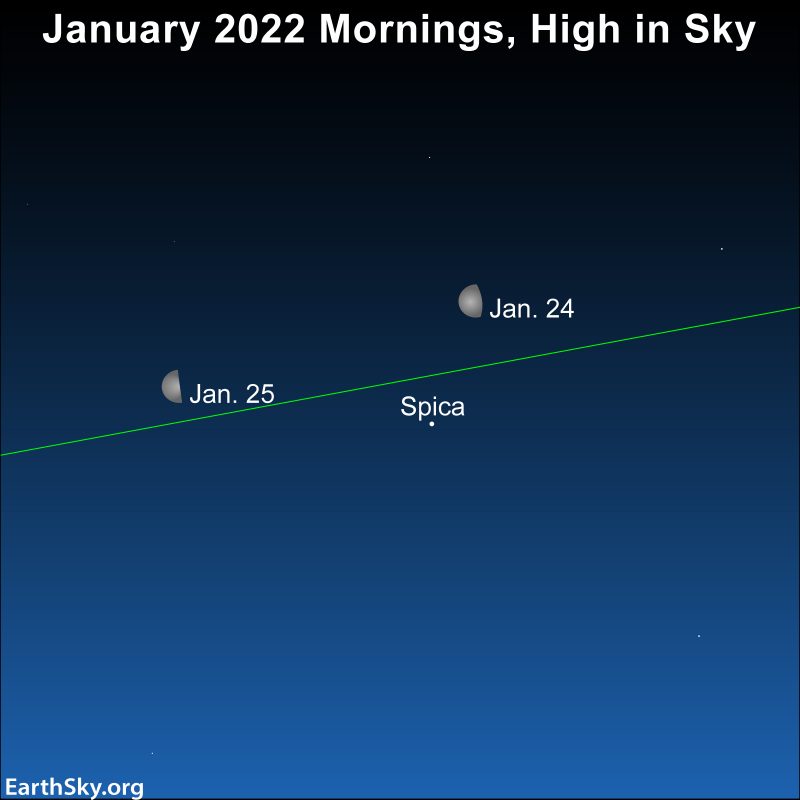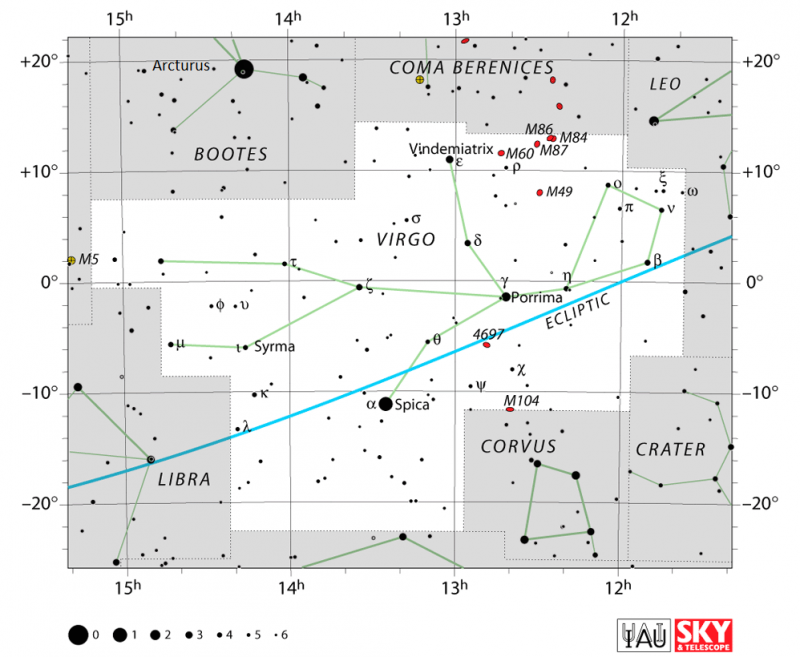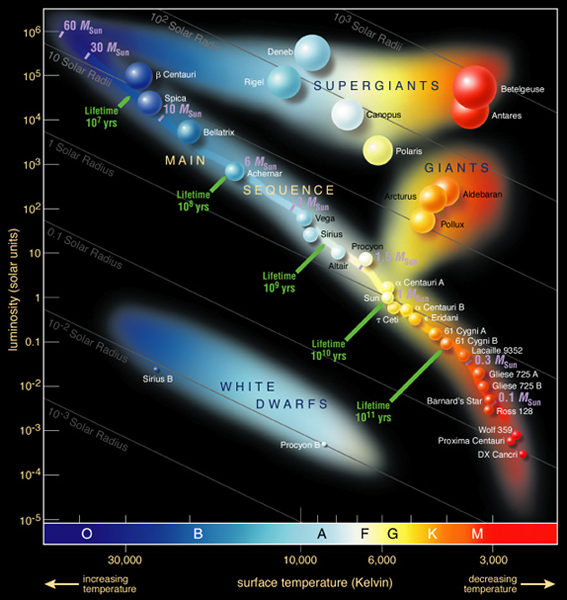
Moon and Spica in the morning
Insomniacs and early birds can catch the moon near the bright star Spica in the constellation Virgo the Maiden on January 24 and 25. In western skylore, Virgo represents a goddess of the harvest. Spica represents an ear of wheat held in the Maiden’s left hand.
The moon will still be above the horizon on January 24 and 25 as the sun comes up. Before it rises, the rosy dawn will brighten the sky and blot out Spica. The moon will dim but not disappear as it becomes less prominent in the glow of morning. The moon reaches last quarter phase (half lit from our point of view) on January 25 at 13:40 UTC (7:40 am CST).
Visit timeanddate.com’s Moonrise and Moonset Calculator to find out when the moon rises into your sky.
Visit Heavens-Above to find out the moon’s present position in front of the constellations of the zodiac.
EarthSky 2022 lunar calendars now available! Some left, so order now. Going fast!
Spica, Virgo’s brightest star
Spica, a blue-white gem of a star, ranks as the 15th brightest star to light up the nighttime sky. When you consider that Spica resides some 262 light-years from our solar system, this star must be intrinsically very luminous to shine at 1st magnitude brightness in Earth’s sky.

Spica’s blue-white color reveals that this star has an extremely high surface temperature (22,400 kelvin, 39,860 F, or 22,127 C). In contrast, our yellow-colored sun has a surface temperature of nearly 6,000 K (10,340 F or 5,727 C), whereas ruddy Antares sports a rather cool surface temperature of 3,500 K (5,840 F or 3,227 C).

Like all stars, Spica rises some four minutes earlier daily, a half hour earlier weekly and two hours earlier monthly. So, instead of rising around midnight at mid-northern latitudes as it does in January, Spica will rise around sunset in early April. Because Spica shines from dusk till dawn in April, we in the Northern Hemisphere often associate this star with the sweet season of spring.
Bottom line: In January, Spica is out from late night until dawn. Use the moon to guide your eye to Spica before daybreak on January 24 and 25, 2021, and look forward to this star’s all-night appearance in April.
The post Last quarter moon and Spica, mornings of January 24 and 25 first appeared on EarthSky.
0 Commentaires